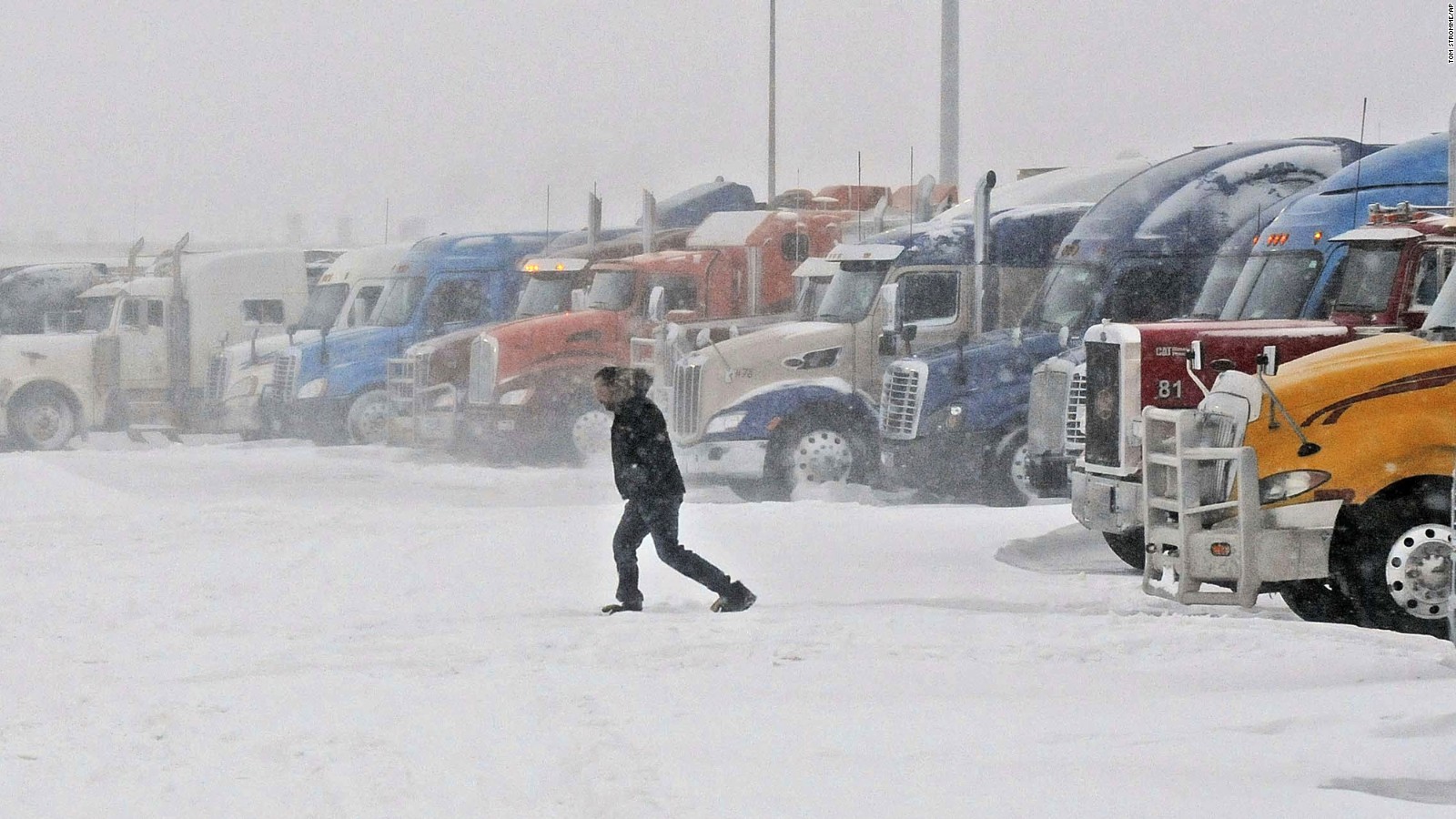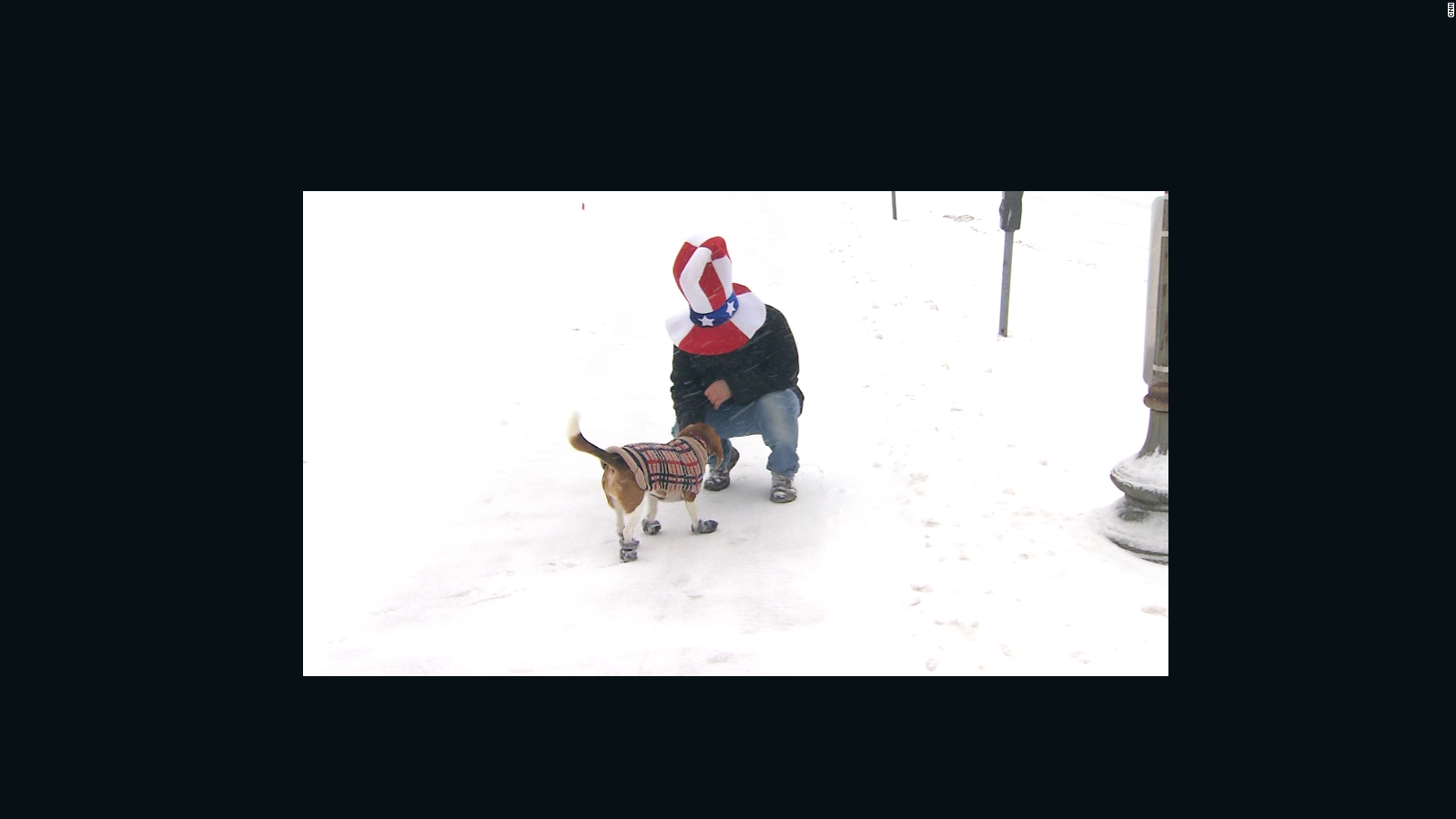'Polar Plunge' ushers in coldest air of the season

Story highlights
- Three-quarters of the country will see freezing temperatures this week
- The coldest polar plunge since last winter
(CNN)Record-breaking wintry temperatures are gripping the eastern two-thirds of the country, signaling that this could be one of the coldest seasons in years.
Across the United States, 76 locations have shattered their daily record cold high temperatures for December since the beginning of the month. That means some towns saw their coldest December day ever.
The bad news is that it's going to get even colder for the rest of the week. Below-freezing temperatures are expected for 7 percent of the country -- in fact, most of the country will see the coldest air since last winter.
This storm pattern is reminiscent of the 2014 Arctic outbreak that started a social media trend called the "polar vortex."
The term took off, especially on Twitter, and meteorologists have been trying to clarify to the public what the name means. The polar vortex always exists near the north pole. An upper-level meteorology pattern called the polar jet stream locks in the cold air to the Arctic. Occasionally this northern jet stream meanders south and ushers in the polar air deep into the southern regions of North America.
The 2013-2014 winter season brought crippling below freezing temperatures and above average snowfall across the north central and eastern -- which cost an estimated $263 million dollars in damages, according to the National Oceanic and Atmospheric Administration.
- Three-quarters of the country will see freezing temperatures this week
- The coldest polar plunge since last winter
(CNN)Record-breaking wintry temperatures are gripping the eastern two-thirds of the country, signaling that this could be one of the coldest seasons in years.
Across the United States, 76 locations have shattered their daily record cold high temperatures for December since the beginning of the month. That means some towns saw their coldest December day ever.
The bad news is that it's going to get even colder for the rest of the week. Below-freezing temperatures are expected for 7 percent of the country -- in fact, most of the country will see the coldest air since last winter.
This storm pattern is reminiscent of the 2014 Arctic outbreak that started a social media trend called the "polar vortex."
The term took off, especially on Twitter, and meteorologists have been trying to clarify to the public what the name means. The polar vortex always exists near the north pole. An upper-level meteorology pattern called the polar jet stream locks in the cold air to the Arctic. Occasionally this northern jet stream meanders south and ushers in the polar air deep into the southern regions of North America.
The 2013-2014 winter season brought crippling below freezing temperatures and above average snowfall across the north central and eastern -- which cost an estimated $263 million dollars in damages, according to the National Oceanic and Atmospheric Administration.
Dangerously low temperatures
When this weather pattern happens, temperatures will usually fall well below average across much of the country.
"This week's dangerous cold will sweep the country from Bismarck to Boston with -10 to -35 degree wind chills expected," CNN meteorologist Rachel Aissen said. "At -35 degrees, wind chills takes only 10 minutes for frostbite to occur."
Indeed, three-quarters of the country will see freezing temperatures this week.

When this weather pattern happens, temperatures will usually fall well below average across much of the country.
"This week's dangerous cold will sweep the country from Bismarck to Boston with -10 to -35 degree wind chills expected," CNN meteorologist Rachel Aissen said. "At -35 degrees, wind chills takes only 10 minutes for frostbite to occur."
Indeed, three-quarters of the country will see freezing temperatures this week.

Wind chill advisories are already covering the Dakotas and Montana where a strong cold front is moving south across the plains. This cold air will move into the eastern United States from Wednesday into Thursday where last week's winter storm system still has the northeast in its grip.
This arctic air mass blows in is on the heals of last week's storm that is still dropping snow across the Northeast Monday.
Snow will continue for much of New England Monday evening through midnight before the next system returns later this week.
Though major metro areas aren't expected to see snow Monday, there is chance of some snow showers Thursday night as the next front pushes through.
In addition to snow in the mountains, the last cold weather system produced heavy bands of snow across the Great Lakes region.
Wind chill advisories are already covering the Dakotas and Montana where a strong cold front is moving south across the plains. This cold air will move into the eastern United States from Wednesday into Thursday where last week's winter storm system still has the northeast in its grip.
This arctic air mass blows in is on the heals of last week's storm that is still dropping snow across the Northeast Monday.
Snow will continue for much of New England Monday evening through midnight before the next system returns later this week.
Though major metro areas aren't expected to see snow Monday, there is chance of some snow showers Thursday night as the next front pushes through.
In addition to snow in the mountains, the last cold weather system produced heavy bands of snow across the Great Lakes region.
No comments:
Post a Comment